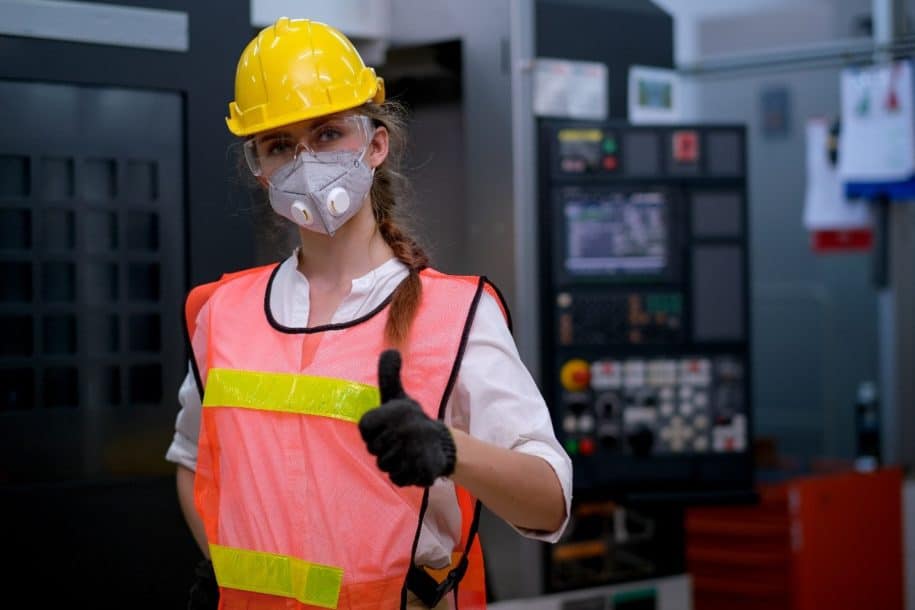During the implementation of a robust and sustainable observation program for companies, one question comes up quite often: “How many inspections should we do?” Although a definitive number would be an ideal answer, safety inspection frequency is heavily influenced by several factors, including but not limited to:
- the frequency of documented inspections required by a regulatory agency.
- guidelines from a safety management system (e.g., OSHA VPP, OSHAS 18001.)
- the number, size, and potential risk of different work operations or equipment.
- desired team building/employee involvement/safety committee activities.
- the number of shifts and the varying activity of each shift.
- the number of hours worked by the employees at the location.
- the potential for the introduction of new processes, equipment, and/or workers.
- historical patterns of at-risk activity.
- past incident/near miss records.
These are some basic guidelines for setting initial expectations, but they vary based on the circumstances. Ideally, your goal is to verify that good interaction is occurring with workers to facilitate safety conversations and redirect efforts based on prioritized needs relative to the data collected.
OSHA has a Challenge program that provides interested employers and workers with the opportunity for assistance in improving their safety and health management systems. Within the challenge’s guidelines (coined by OSHA as a “Roadmap to Safety and Health Excellence”) there are recommendations for routine self-inspections:
Construction Industry (more frequent due to dynamic nature)
- Conduct routine self-inspections that cover the entire worksite as often as necessary (at least weekly).
- Ideally, subcontractors on the project have a process to perform similar self-inspections.
General Industry
- Conduct routine self-inspections that cover the entire worksite at a minimum of once per month, ensuring the entire worksite is inspected at a minimum of once per quarter.
According to the OSHA challenge guidelines, the process of a documented system for routinely scheduled self-inspections in the workplace should contain the following components:
- A tool or checklist.
- An inspection schedule.
- A record of findings.
- Assignments for abatement.
- The ability to track identified hazards for timely correction.
These inspections, often referred to as “safety inspections,” should not be confused with “equipment inspections.” As part of a self-inspection, questions can be asked about equipment; however, this usually involves specific issues that depend on the equipment. Here are a few examples of pieces of equipment that require an independent inspection:
- Forklifts and motorized equipment.
- Cranes and hoisting equipment.
- Ladders.
To achieve the best results and to demonstrate commitment to the process, observations should be done by the worker who is closest to the work and/or the line supervisor who monitors the work. The goal is to always start quantitatively and then refine the approach to address quality. In any successful process, measurable goals must be set that can then be tracked to completion. Participation is typically quantified as a numerical goal based on the employee’s role. For example, here are some typical quantitative goals to measure participation:
- 1-2 per month for senior management.
- 1-2 per week for line managers, superintendents, and front-line workers.
- 3-5 per week for safety personnel.
At first regard, this model may appear to be skewed in the diversity rate. Still, there’s generally more non-safety staff at any given position, so the total number of inspections related to diversity balances out. There are many crucial takeaways from this model that can serve to refine the diversity rate:
- For non-safety staff, increasing participation is more impactful than adding more people. (For example, adding another inspection requirement per week yields more inspections than adding two more executives).
- Determination of the specific inspection frequency by role should account for work functions, meaning there needs to be a clear understanding of what the individual does on a day-to-day basis.
- By setting the frequency at the proper level, diversity will improve, and quality observations will be collected. If the frequency is set too low, ownership cannot be established, and if the frequency is set too high, there will be a marked decline in return on investment.
Overall, this approach can be accommodated by both small and large companies, as the requirement is set at the individual level. The inspection strategy should coordinate activity to minimize overlaps as well as ensure the best coverage for monitoring.
Another novel approach being used by some companies is a formula based on man-hours (MH). Specifically, 1 inspection per 200 MH. The following is an example of this approach in action:
There are a dozen workers in a small warehouse. Each worker works 40 hours/week. This equals a total of 480 MH for the location per week. A base of two inspections per week is required (with extra if any of the factors defined in the opening paragraph necessitate it).
This same method can be applied to inspecting groups. For example, if there are multiple crews/departments/contractors working but only one accounts for 80% of the man-hours, it is appropriate for 80% of the observation effort to be directed towards the group which generates the most hours. This application varies with the additional factor of risks:
There are two contractors with equivalent work hours. One is a roofing team, and the other is an indoor painting crew. Since the roofers are likely to encounter more risks, they should receive more inspections and observations.
Ultimately, it is up to your company to determine what fits best for safety inspections. A one-size-fits-all approach does not exist. Even so, there are many resources that can aid the development of a meaningful approach to worksite safety inspections. The goal is to give you and your company the best return on investment for time spent in the observation process from both a risk management and coaching aspect.
AUTHOR BIO

Cary comes to the SafetyStratus team as the Vice President of Operations with almost 30 years of experience in several different industries. He began his career in the United States Navy’s nuclear power program. From there he transitioned into the public sector as an Environmental, Health & Safety Manager in the utility industry. After almost thirteen years, he transitioned into the construction sector as a Safety Director at a large, international construction company. Most recently he held the position of Manager of Professional Services at a safety software company, overseeing the customer success, implementation, and process consulting aspects of the services team.
At SafetyStratus, he is focused on helping achieve the company’s vision of “Saving lives and the environment by successfully integrating knowledgeable people, sustainable processes, and unparalleled technology”.



